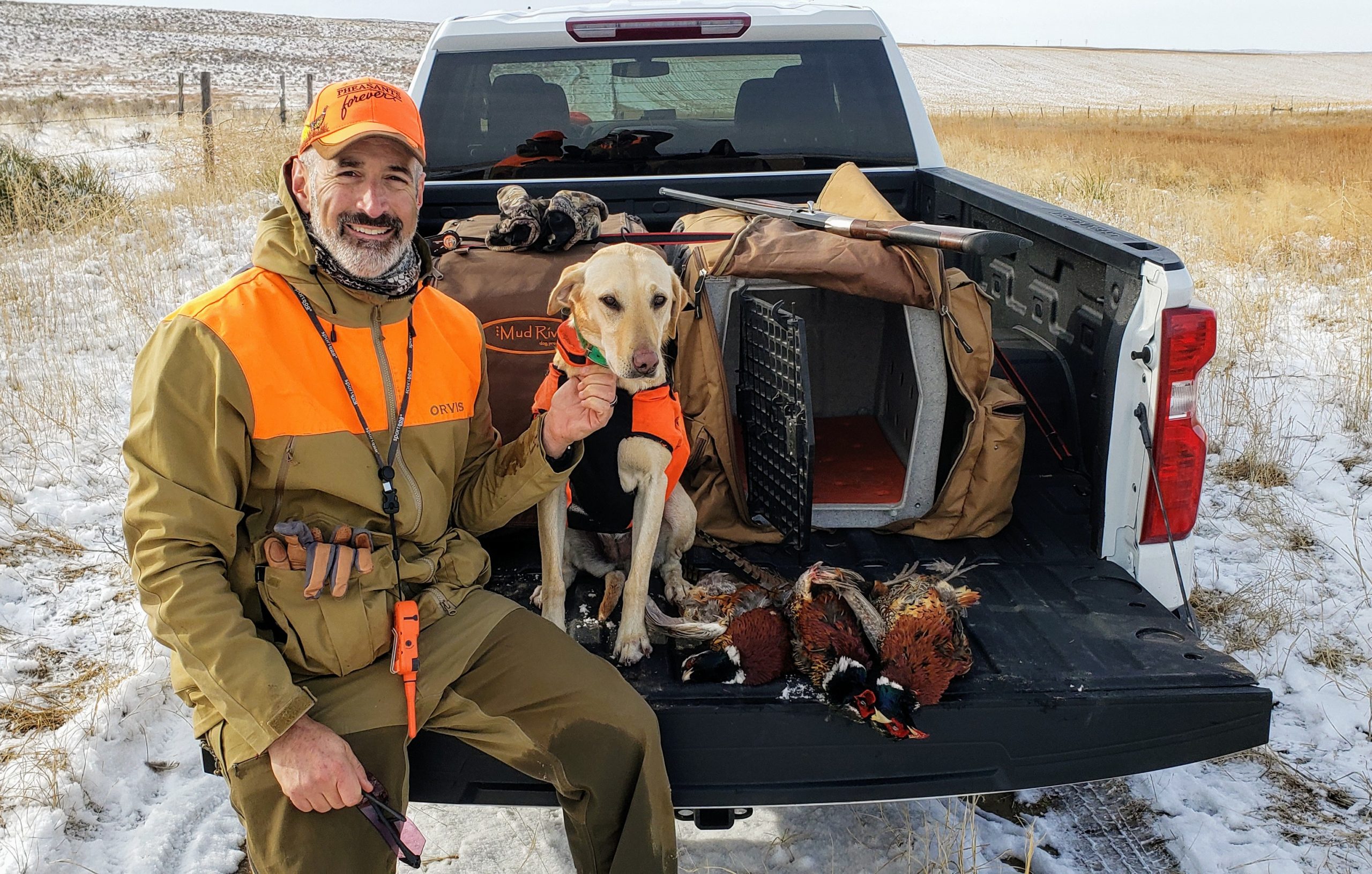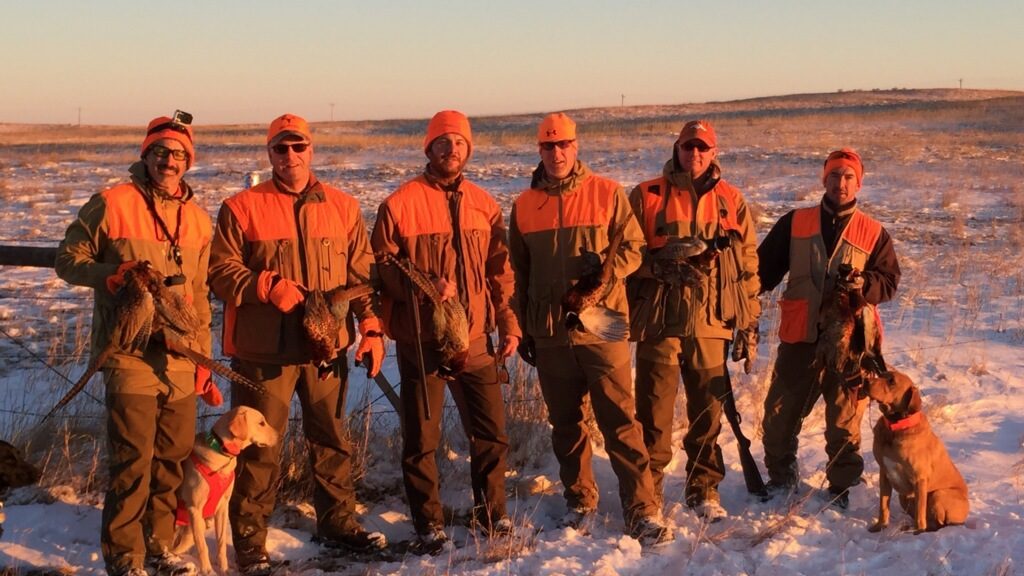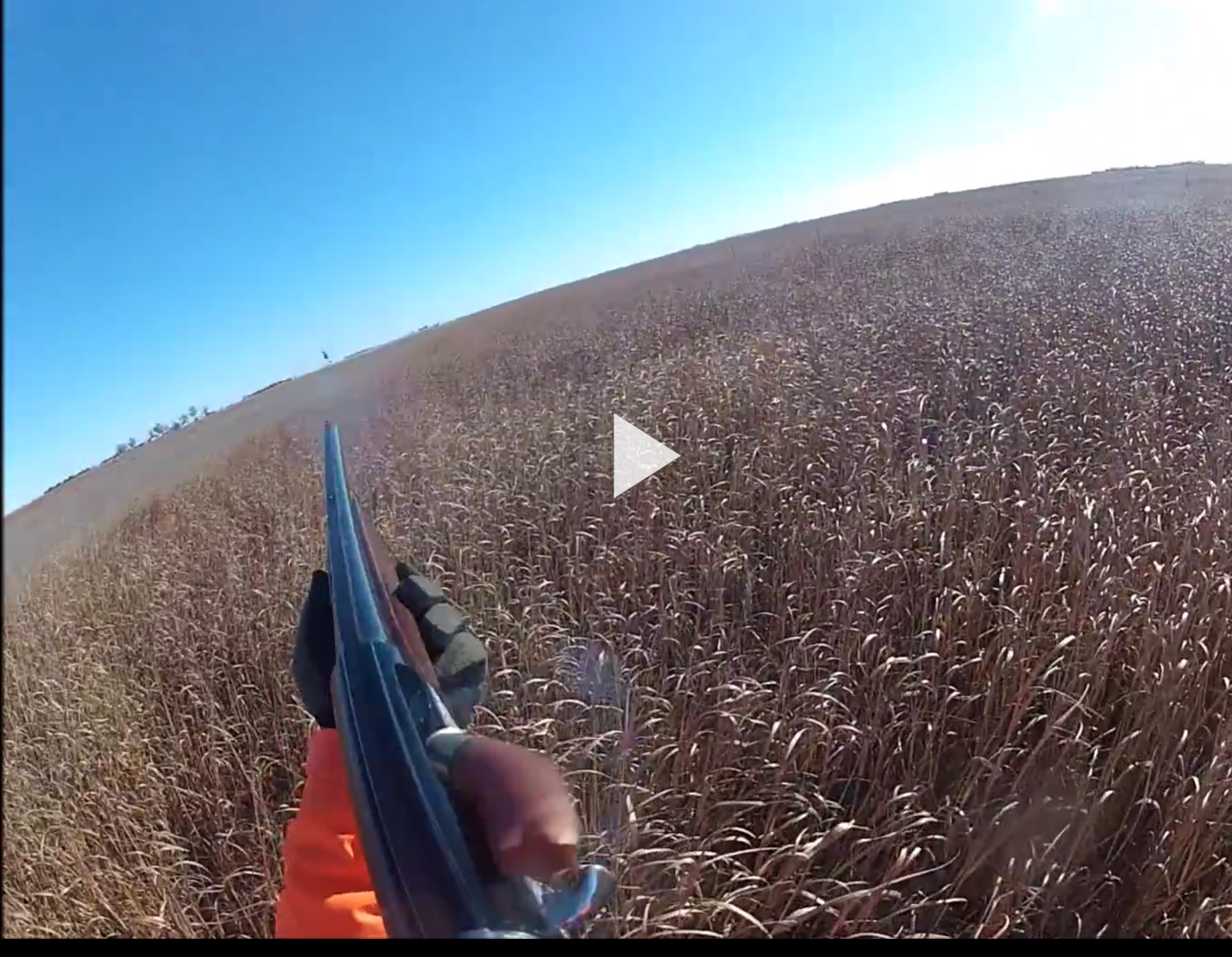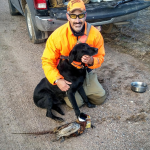Season four with Echo had many memorable highlights. While birds in Eastern Colorado were not as abundant as in past years, she and I managed to get it done more often than not. There was one specific day in December that proved to be the most incredible I have ever witnessed in my years in the field.
Greg and I rolled into Yuma just after 8 am. The night before I received permission to hunt a fantastic half section of native grass just south of town. I hunted this property throughout the early part of the season, and I had taken a few roosters while seeing many more. The dogs hit the field with excitement as we made our way to the initial edge of the thigh-high cover. Not dissimilar to previous walks, there were birds present, but they all flushed wild. Seventy-five minutes later, and with no shots taken, Greg and I regrouped at the truck to debate what we would do next.
I have additional private access just west of town, and there are some good WIAs within minutes of our location. Taking a calculated risk, we made the decision to travel an hour east in order to hunt an exquisite farm just north of Wray. As we entered town, we noticed a blanket of fresh snow covering the ground. The newly discovered conditions brought great anticipation for the day ahead. As we drove to my favorite spot in Colorado, we pulled over to evaluate a corner where we have access. I noticed a hen sitting on a plum thicket branch about two feet above the snowy ground. She got fidgety and took off. An unseen rooster followed her, and then forty birds exploded from their hidden positions. Greg and I looked at one another and smiled.
We quietly approached the half section of CRP with a realistic expectation to find a lot of birds. Two cornfields border the 320 acres of tall grass, making this property an ideal environment for housing wild pheasants. As we walked north towards a perfectly designed shelterbelt, birds suddenly started to appear in every direction. Echo and I were still seventy-five yards from the trees when the action began. Literally two hundred pheasants took flight in groups of twenty. Picking up the pace Echo and I finally made it to the east side of the pines. As birds continued to fly in waves from their hiding spots, they veered away from me once they noticed my conspicuous location. I took a futile shot at a rooster that briefly appeared before vanishing from my vantage point. Echo remained focused as her senses were sharp given the number of birds that had been present. She and I made our way around to the backside of the windbreak, and a hen busted followed by a rooster. I mounted my shotgun and followed the bird to my right. One shot crumpled him, and Echo made a quick retrieve.
Echo and I limited out in less than an hour. We saw more wild pheasants on this one day then during ten trips combined last season. It was good to see these magnificent animals flourishing in ideal habitat.







